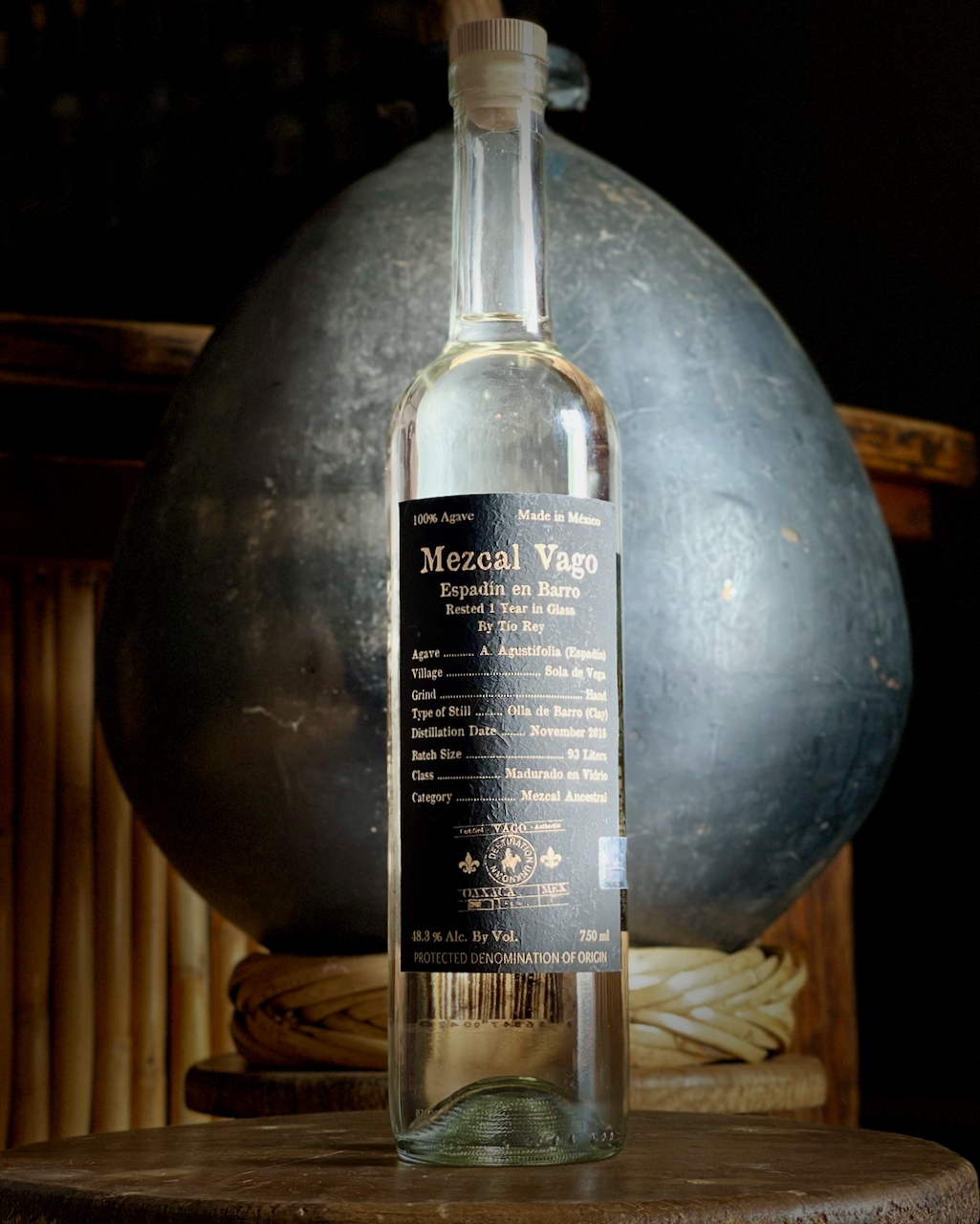Espadín Jarquín
This 100% Espadín is distilled by the newest member of our family, Emigdio Jarquín in El Nanche, Miahuatlán de Porfirio Diaz (16°39'78.7"N, 96°55'07.5"W). Don Emigdio is a fourth-generation mezcalero from the Nanche district of Miahuatlán. We searched far and wide for just the right mezcalero to ask to join our family. We knew it they had to have just the right mix of skill and character. After working with Emigdio for nearly a year, we are incredibly pleased to be sharing some of the best Espadín we have tasted.

Agave Espadín
Espadín typically takes 7 – 12 years to mature, reaching roughly 5 – 6 feet in diameter and 4 feet in height. The rosette has very straight, narrow pencas with a gray-green hue and small spines. Once the pencas have been removed, the piña of a mature espadín can weigh around 100 kilograms.
The genetic “mother” of a. Tequilana, a. Angustifolia var. Haw, or “Espadín,” is the most prolific species of agave used in mezcal production. The plant grows prevalently throughout Oaxaca but its range extends between both the north and south borders of Mexico. The plant is very disease resistant, has a large yield of mezcal produced per kilo of agave harvested (due to high sugar concentrations) and has a shorter maturation time compared to most other agave used for distillation. The plants can be easily cultivated and are able to reproduce clonally; all of these factors combining to allow a. Angustifolia to dominate the mezcal market. Almost every brand of mezcal begins by bottling an Espadín and it is usually the first one that consumers experience; both because of its availability and price point. 77.4% of mezcal produced in 2014 was from a. Angustifolia. The geographic range of a. Angustifolia can be seen in the map below.

*Image taken from CONABIO website

Producer: Emigdio Jarquin Ramirez
Mezcal goes back in his family at least three generations, Emigdio having learned it from his grandfather. Their horno is a conical pit dug into the earth, which can hold up to 7 tons of Espadín. Emigdio usually roasts his agave for 5-7 days, which is on the longer end of an average roast. He then lets it rest in the sun to cool for one to two weeks.

Emigdio’s Tahona
They use a cement tahona lined with rocks and pulled by mule to crush their agave. Once crushed, they use four Ocote wood fermentation vats with volumes of 1,470, 1,600, 1,600, and 1,700 liters, which usually take around three days to ferment to completion.

Refrescador Still Exterior

Refrescador Still Condenser
Distillation is done in a 300 l. copper refrescador still. Using a Refrescador is a technique that is common to the area surrounding Miahuatlán, but Vago had never bottled mezcal made this way before. The still looks similar to a copper alembique still with a stainless steel cylinder surrounding it. This cylinder is then filled with water, allowing it to cool the upper part of the still. This upper chamber now acts as a condenser and sends the alcohol vapor back down into the boiler before being heated again and passing out of the still and into the condensing coil. This method essentially allows for two distillations during a single pass through the still. Cuts are made using a carrizo to test for ABV as well as taste and smell. A full capacity 300 l. still will produce, on average, 100 l. of mezcal in roughly 14 hours.
A full roast of 700 tons will produce up to 700 l. of mezcal depending upon the which agave is being used. ABV is then adjusted by using colas that have been rested with distilled water in order to preserve taste and mouthfeel. Like all Vago mezcal, Emigdio’s goes through a simple sediment filtration through a tubular cellulose filter before bottling. The bottling is done by hand in Oaxaca City. The very light filtration is the only way the mezcal is affected between when it was made on the palenque and how it ends up in the bottle.

Location: Miahuatlán de Porfirio Díaz
Don Emigdio distills outside of Miahuatlán de Porfirio Diaz. We are very proud and excited to have finally found a mezcalero from this area we can put in a Vago bottle. Miahuatlán is a historically important town in mezcal production as well as where both Aquilino and Tío Rey’s families emigrated from. By adding Emigdio to the family, we are able to extend the conversation of our history and tradition even further back in time.
Don Emigdio’s land is in the El Nanche district of Miahuatlán de Porfirio Diaz, about 2 ½ hours directly South of Oaxaca City. The Palenque sits at around 4,970 ft., among gently rolling hills and shallow arroyos in a semi-arid climate. In the surrounding area grows Agave Espadín, Mexicano Verde, Tobala, Tepeztate, Arroqueno, Pulquero, Madre Cuixe, and Bicuixe (Cuixe).







